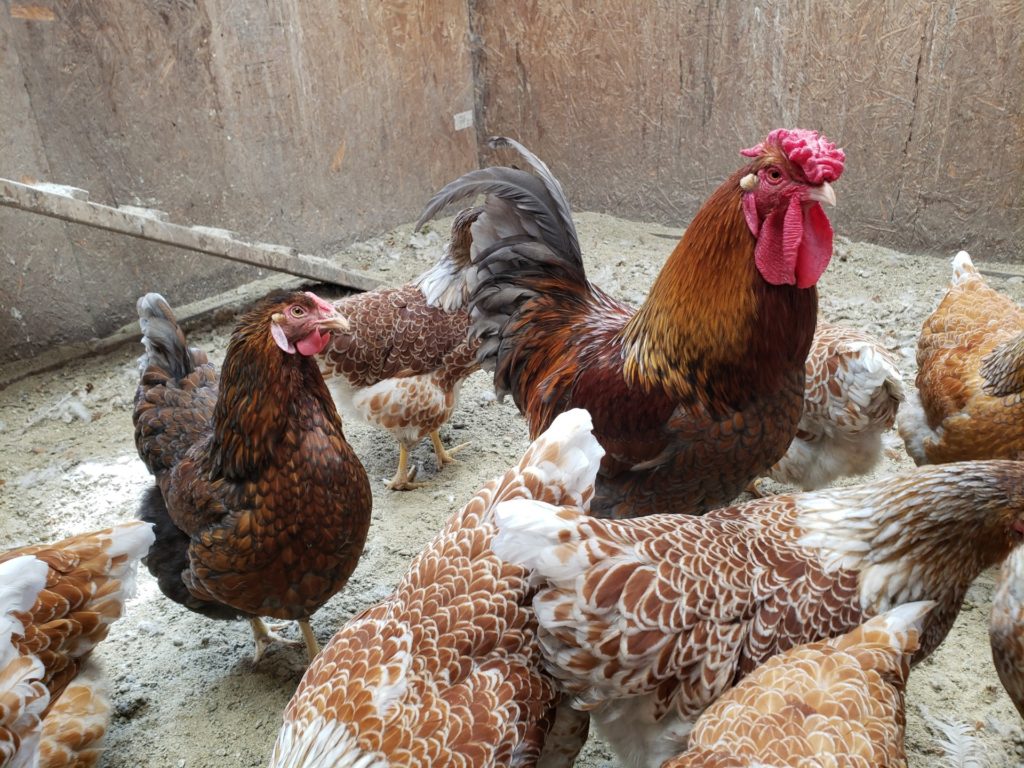
What are Blue Laced Red Wyandotte Chickens?
From Wikipedia:
The Wyandotte is an American breed of chicken developed in the 1870s. It was named for the indigenous Wyandot people of North America. The Wyandotte is a dual-purpose breed, kept for its brown eggs and its yellow-skinned meat. It is a popular show bird, and has many color variants. It was originally known as the American Sebright.
The Wyandotte was created in the United States in the 1870s by four people, H. M. Doubleday, John Ray, L. Whittaker and Fred Houdlette. The first type was the silver-laced, which was included in the American Standard of Perfection of the American Poultry Association in 1883; it was taken to Britain at about the same time. It had previously been known as the Sebright Cochin or American Sebright. The origin of the breed is unknown; it is thought derive partly from spangled Hamburgs and dark Brahmas – the Hamburg for the rose comb and the Brahma for the color pattern.
The Wyandotte is a fairly large bird, with weights for adult birds in the range of 6 to 9 lbs (2.7 to 4 kg). The body is of medium length, broad in the back and with a deep, full and well-rounded breast. It is clean-legged and fairly close-feathered, and has a broad skull with a rose comb. The skin and shanks are yellow, and the ear-lobes, face and wattles are red.
In the United States, nine color varieties are recognized by the American Poultry Association: black (1893), blue (1977), buff (1893), Columbian (1905), golden laced (1888), partridge (1893), silver laced (1883), silver penciled (1902) and white (1888). For bantams, the same nine colors are recognized, with the addition of buff Columbian.